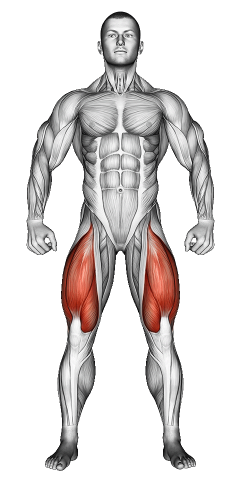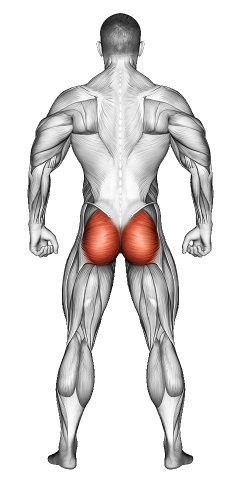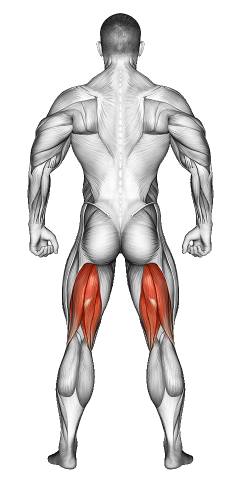Dumbbell Side Lunge: Video Tutorial & Exercise Guide

Written By: Claude Michael
Updated: Oct 13, 2024
| Workout | Dumbbell Side Lunge |
| Primary Muscle Group | Quads |
| Secondary Muscle Group | Calves, Hamstrings, Glutes |
| Equipment Required | Dumbbell |
| Force Type | Push |
| Mechanics | Compound |
| Exercise Type | Strength |
| Difficulty | Intermediate |
Dumbbell Side Lunge: Video Tutorial & Exercise Guide
- 1.Dumbbell Side Lunge: Muscle Groups
- -1.1Primary Muscle Group
- -1.2Secondary Muscle Group
- 2.Dumbbell Side Lunge: Step-by-Step Guide
- 3.Dumbbell Side Lunge: Overview
- 4.Dumbbell Side Lunge: Benefits
- 5.Dumbbell Side Lunge: Pro Tips & Advanced Techniques
- 6.Dumbbell Side Lunge: Progression Plan
- 7.Dumbbell Side Lunge: Frequently Asked Questions (FAQs)
Secondary Muscles Group
Dumbbell Side Lunge: Step-by-Step Guide
- Step 1: Stand upright with your feet hip-width apart, holding a dumbbell in each hand at your sides or in front of your chest. Keep your core engaged and your chest up.
- Step 2: Take a large step to the right with your right foot, keeping your left foot planted. Bend your right knee as you step, lowering your body into a side lunge. Keep your left leg straight and your toes pointing forward.
- Step 3: Lower your hips until your right thigh is parallel to the floor, ensuring your chest stays lifted and your back remains straight.
- Step 4: Press through your right heel to push yourself back to the starting position, bringing your feet back togClaude.
- Step 5: Repeat on the left side and continue alternating sides for the desired number of repetitions.
Dumbbell Side Lunge: Overview
The Dumbbell Side Lunge is a powerful lower-body exercise that targets the glutes, quads, hamstrings, and inner thighs. It also improves balance, stability, and mobility, making it a functional exercise that enhances overall leg strength and endurance. By adding dumbbells, the exercise increases resistance, challenging your muscles even further.
This movement is excellent for developing unilateral leg strength, correcting muscle imbalances, and building stability in the hips and knees, which can translate to better performance in other exercises and activities.
Dumbbell Side Lunge: Benefits
The Dumbbell Side Lunge strengthens the entire lower body, including the glutes, quads, hamstrings, and adductors (inner thighs). It also improves hip mobility and flexibility, which are essential for movements like squats, deadlifts, and lateral movements in sports. This exercise helps enhance balance and stability, particularly by working each leg independently.
Incorporating side lunges into your routine can also help correct muscle imbalances, promote functional strength, and improve overall athletic performance by targeting lateral movement patterns.
Dumbbell Side Lunge: Pro Tips & Advanced Techniques
Focus on maintaining an upright torso throughout the movement, avoiding any forward lean. Keep your knees tracking over your toes to prevent strain on the joints. For an added challenge, you can increase the weight of the dumbbells or pause for a second at the bottom of each lunge to increase time under tension. To further engage your core and balance, hold the dumbbell in a goblet position in front of your chest.
Dumbbell Side Lunge: Progression Plan
Beginner
Intermediate
Advanced
Dumbbell Side Lunge: Frequently Asked Questions (FAQs)
What muscles do Dumbbell Side Lunges target?
+This exercise primarily targets the quads, hamstrings, glutes, and inner thighs, while also engaging the core and improving hip mobility.
Can beginners perform Dumbbell Side Lunges?
+Yes, beginners can start with lighter weights or bodyweight alone, focusing on mastering form before progressing to heavier dumbbells.
How can I make Dumbbell Side Lunges more challenging?
+Increase the weight of the dumbbells, slow down the movement to increase time under tension, or hold the dumbbell in a goblet position for greater core activation.
What common mistakes should I avoid during Dumbbell Side Lunges?
+Avoid leaning your torso forward or letting your knees collapse inward. Focus on keeping your chest upright, knees tracking over your toes, and your weight distributed evenly.
How often should I include Dumbbell Side Lunges in my routine?
+Incorporate this exercise 2-3 times per week as part of your lower body or functional training routine to improve leg strength, mobility, and balance.
Share
Don’t Wish for It, Work for It – Join the FlexXP Newsletter Today!
Thank you for signing up for the FlexXP Newsletter!
This site is protected and the Google Privacy Policy and Terms of Service apply.



